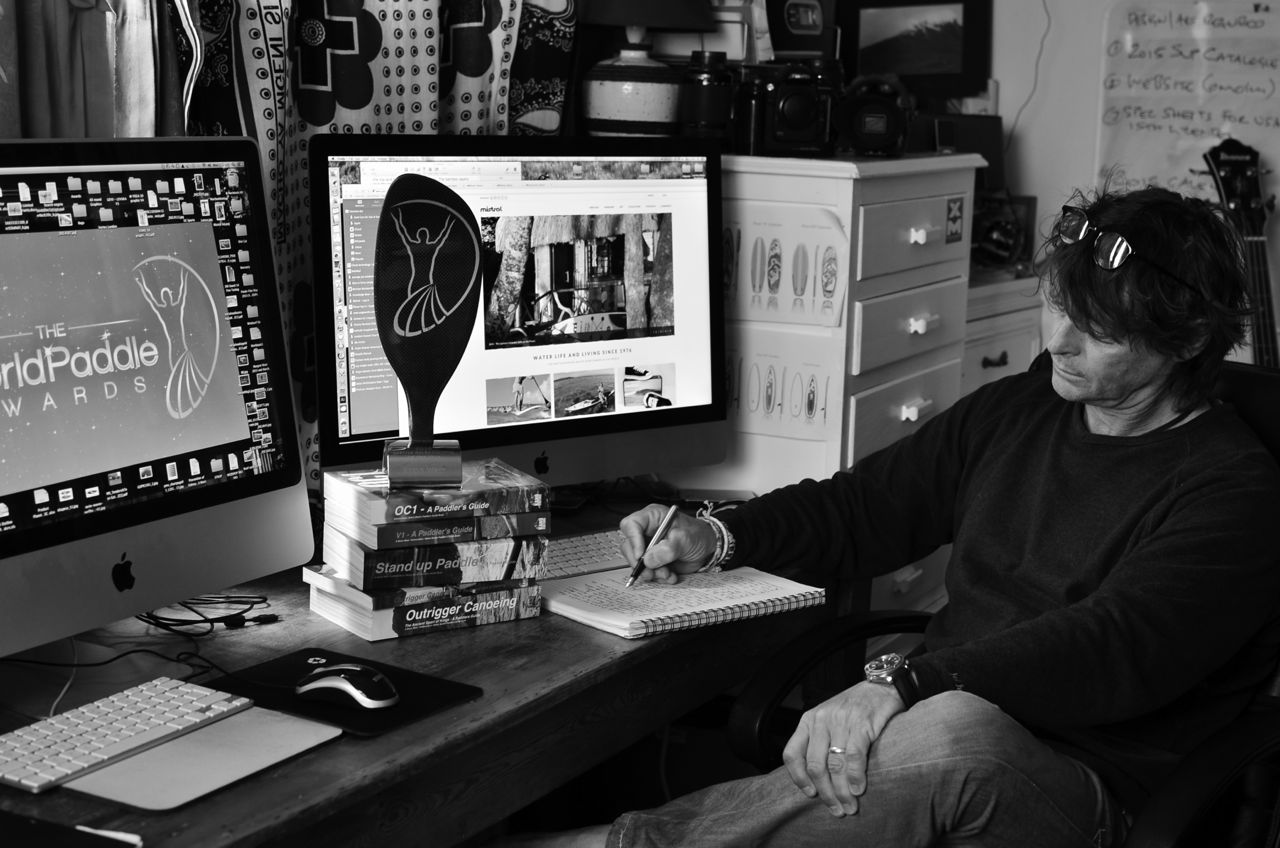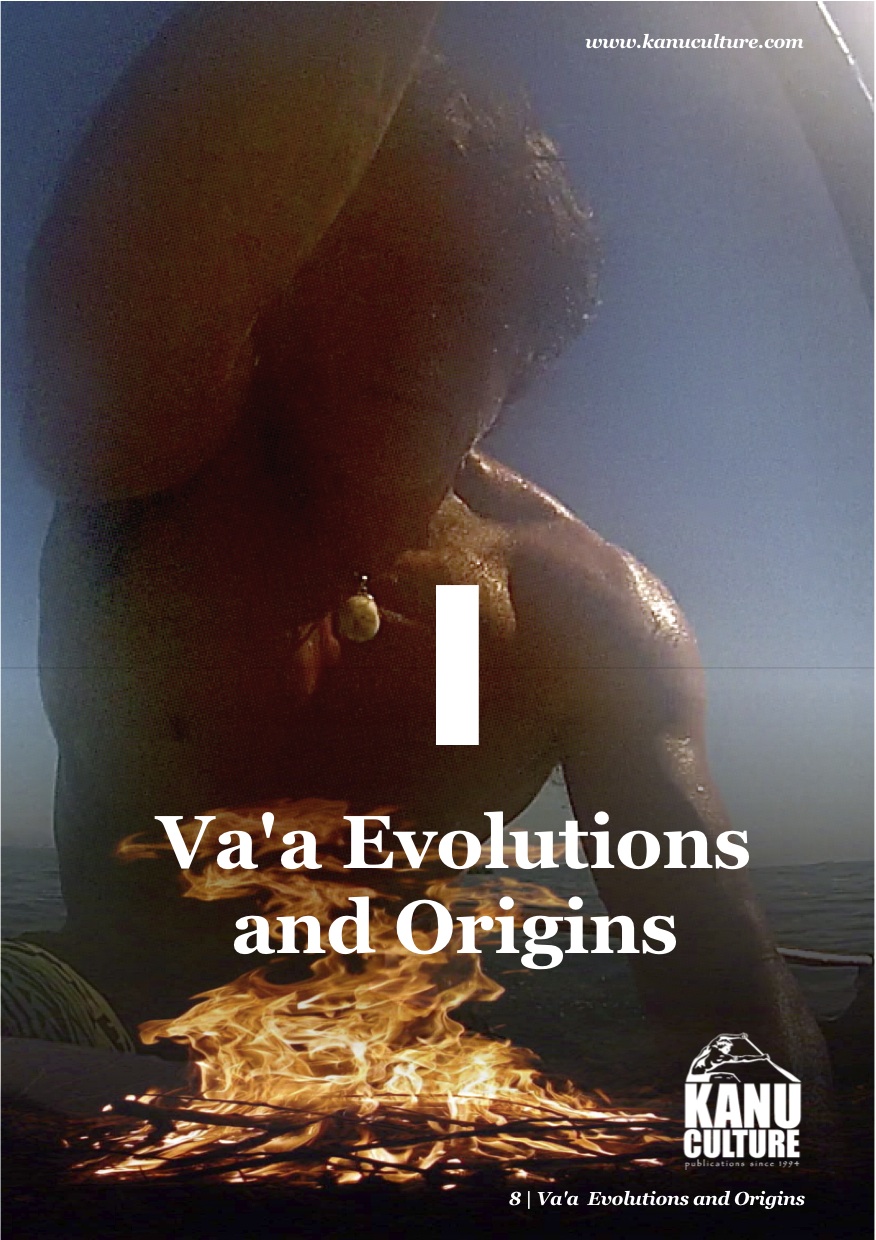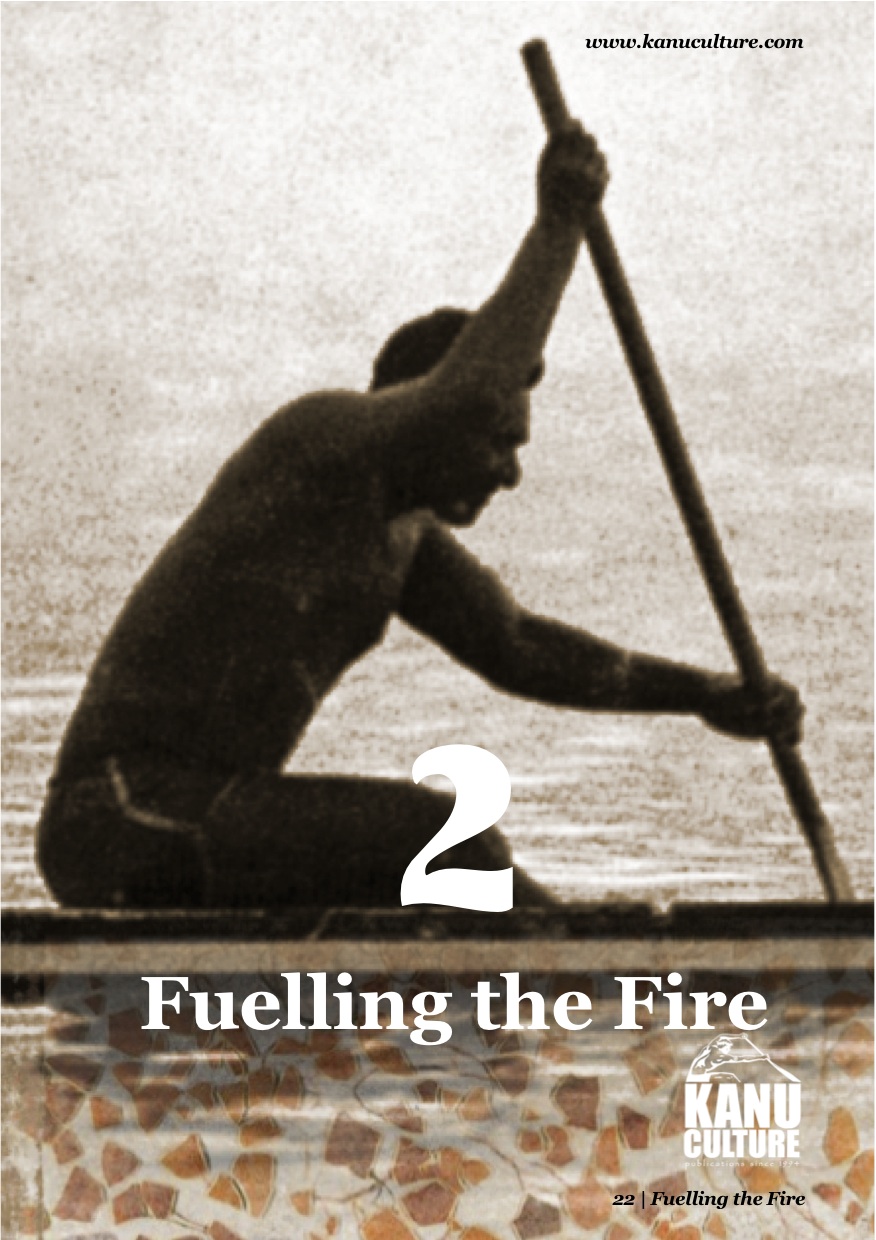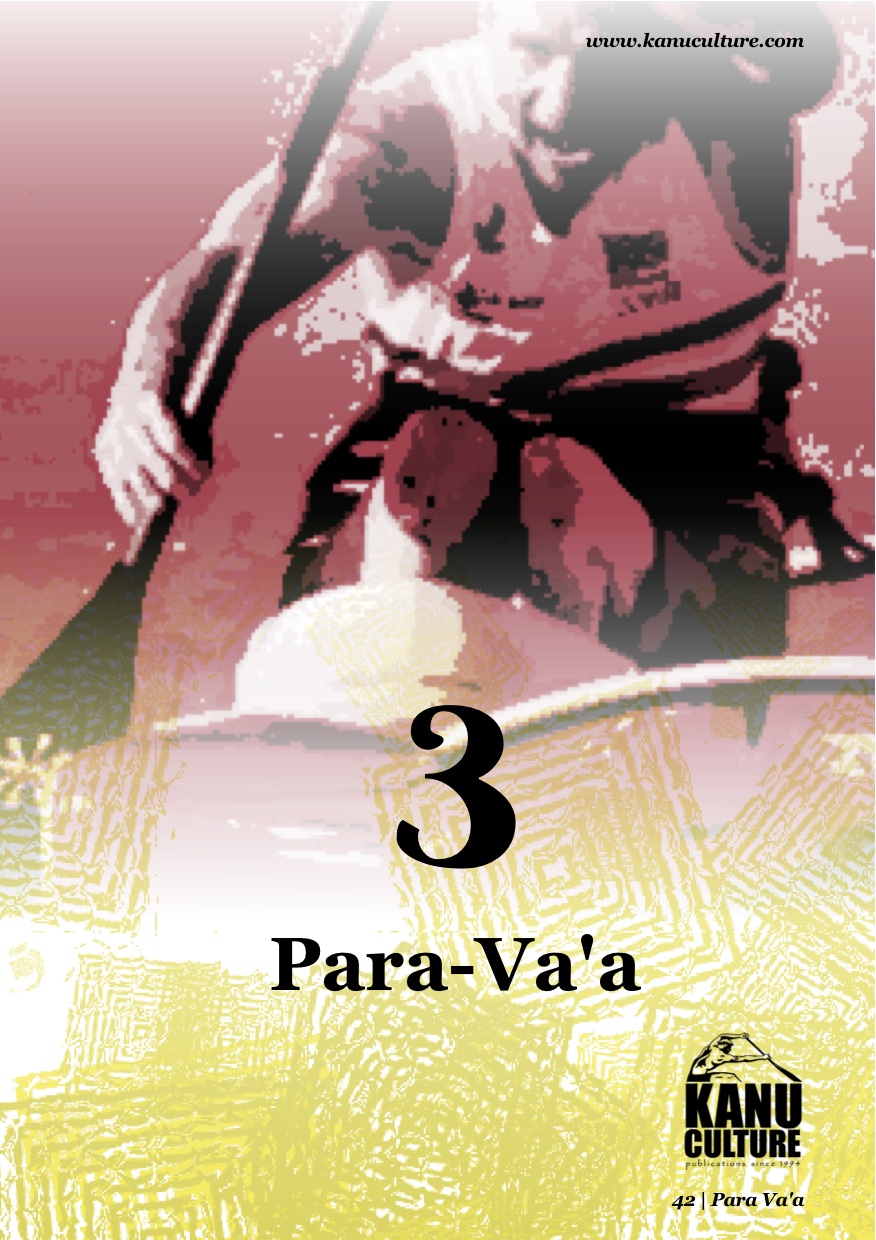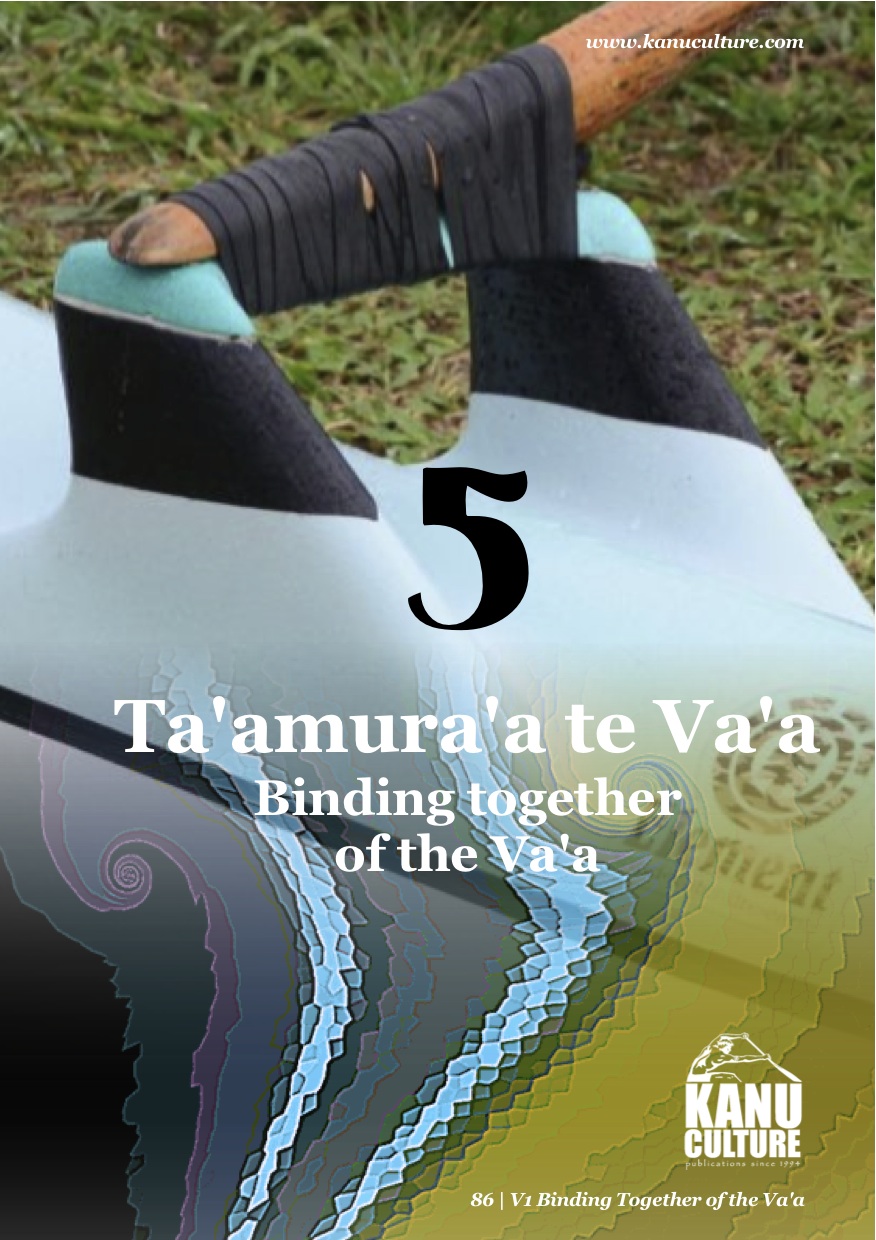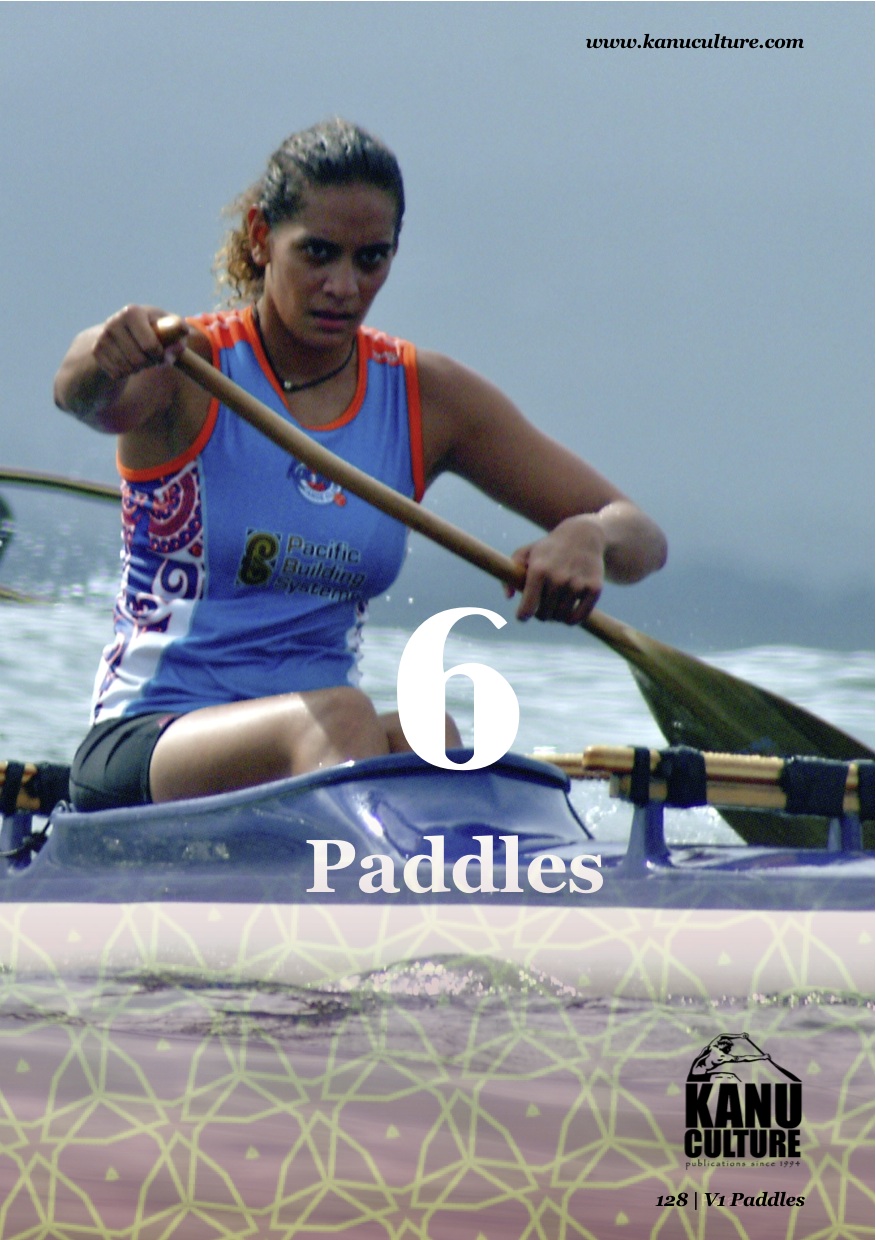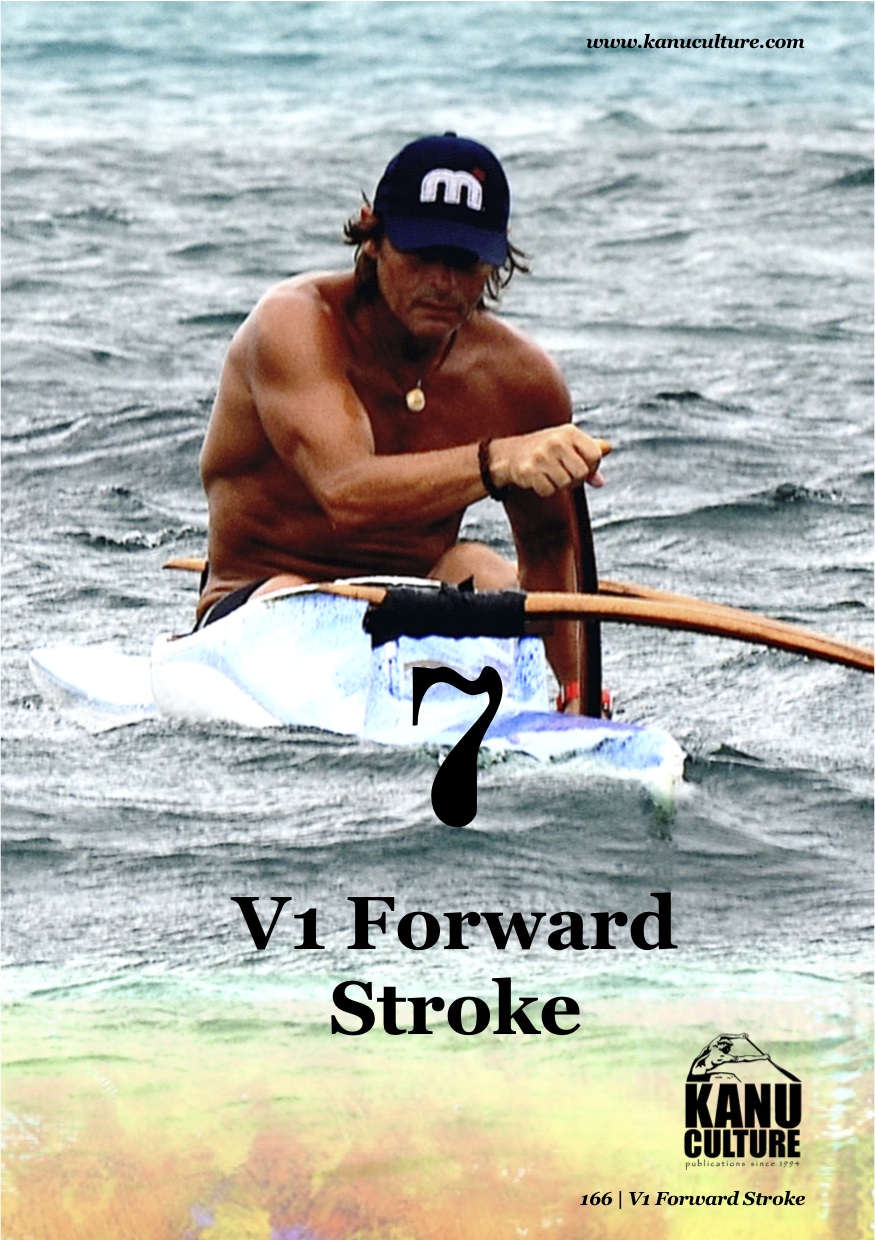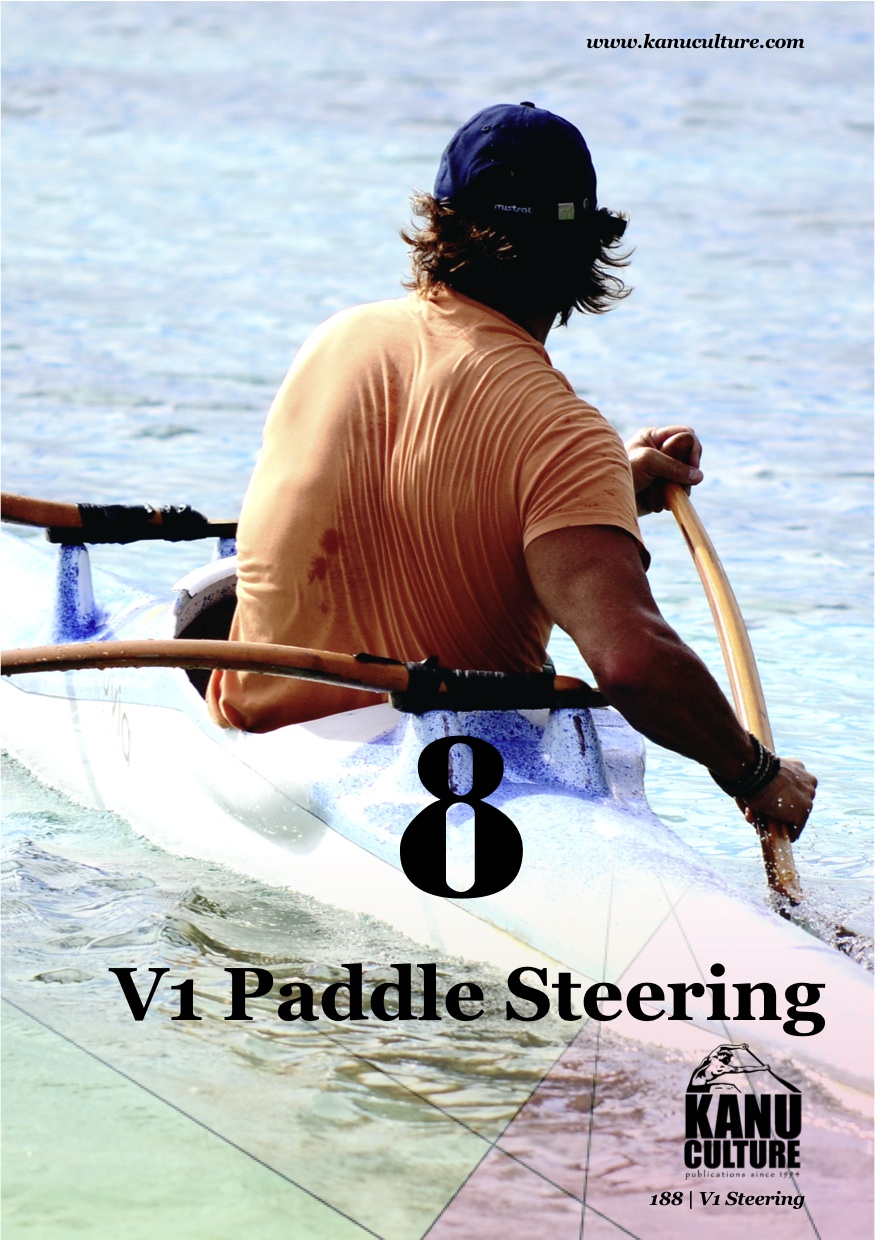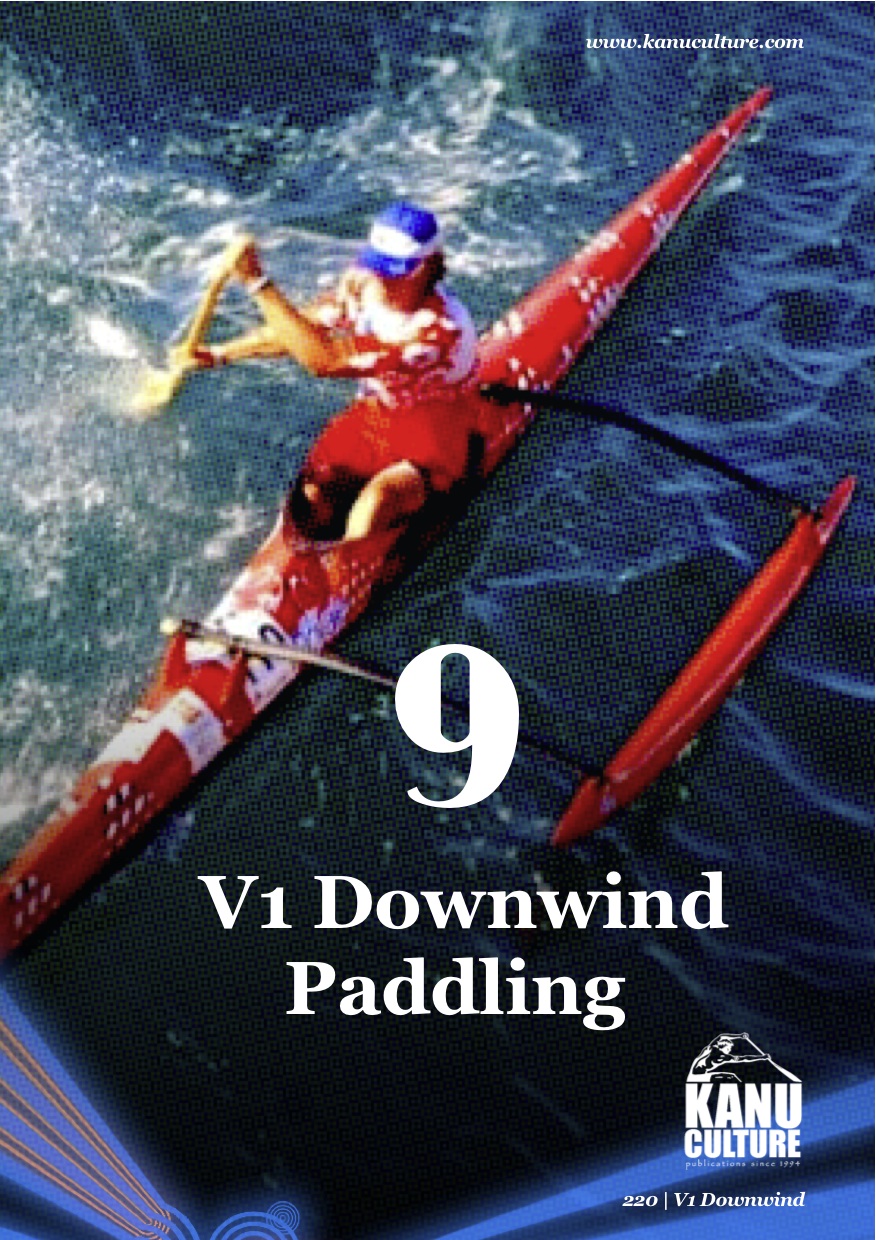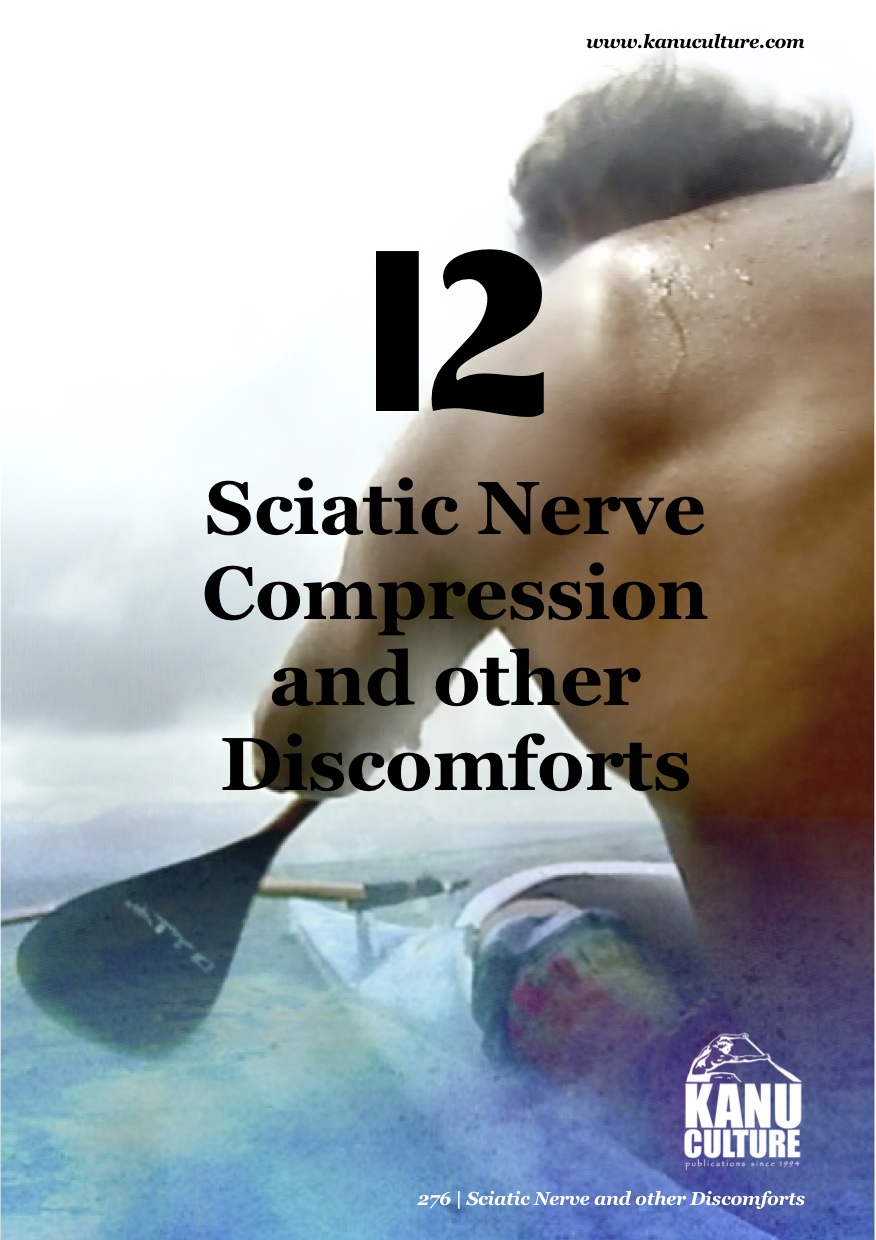PURCHASE PAPERBACK OR PDF DIGITAL VERSION
292 pages, mono and colour pages, soft cover, perfect bound.
A5 210mm x 148 x 43mm (8.27" x 5.82")
“The complexities which V1 paddling can present on account of being rudderless and its asymmetrical geometry, may well combine to make it one of the most challenging paddle craft to master. With Tahitian mastery of the craft, an accepted cultural reality, the isolation of these beautiful and mysterious islands is a summation of the sport itself, a beautiful graceful art when perfected, but for the most part, something of a mystery as to how to make it so.”
“I really appreciated the way Steve explained the differences between paddling on OC1 and paddling a V1. It is very well said and I will be quoting him in the future, to make others understand why I prefer spending some time learning to steer a V1 instead of riding an OC1 and hopefully end some unfruitful debates!”
1. Va'a Evolution and Origins
V1 racing serves to provide continued connection to the craft and the skills associated with its handling and historical lineage between the family of cultures of Oceania.
2. Fuelling the Fire
The evolution of the V1 racing craft has been fuelled and therefore nurtured not just out of cultural pride, but largely because of the existence of key festivals, events and the International Va'a Federation, which have kept this graceful and highly skilled sport growing and growing. We have the people of French Polynesia to thank for this, together with those visionaries who have made the sport what it is today.
“Hello Mandy, the V1 and SUP books arrived today and I look forward to devouring them both. Thank you so much and please send a big “Thank you” to Steve for taking the time to organize and share his wisdom and knowledge of all things ocean paddling! ”
3. Para-Va'a
On the 11th December 2010, in Guangzhou China, para-canoeing was given a positive vote by the International Paralympic Committee (IPC) to become Paralympic. The net result of this recognition, has brought respect, greater world-wide recognition of the sport and increased future investment by companies and paddlers alike.
4. V1 Design Considerations
V1 sport really began its metamorphosis from around the mid 1980s, morphing from being a cultural touchstone into full blown going concern as an area of high end specialisation. V1 design had to be reconsidered and along with it, paddling skills were elevated along with training regimes and the prestige associated with winning emerging V1 specific races, which singled out the islands leading exponents and stars of their national sport.
“Dear Mandy and Steve, being as I am new to paddling as a newborn puppy, I am desperately in need of all of Steve’s good tips, so I am really looking forward to the book, thank you so much for sharing all your knowledge and skills!”
5 Ta'amura'a te Va'a - Rigging
Ta'amura'a te va'a (Binding together of the va'a). Whether you're a novice or elite paddler, you'll want your V1 to run smooth and straight and much of the secret is in taking the time to rig the ama so as to be in near perfect tune with the primary hull, your paddling style, body weight and the conditions.
6. Paddles
From the outset, if it's not already obvious, double-bend paddles are the preferred choice of paddle for either V6, V3 or V1 for the Tahitian paddler. The question you may be asking is 'Why?' the answer to which has very much more to do with off-handed remarks, that, '. . . it's just a question of personal choice and ergonomics' a summation which signifies a lack of understanding as to the real reasons which go way beyond merely executing a forward stroke.
7. V1 Forward Stroke
The forward stroke for V1 craft, brings emphasis on bio-mechanical 'smoothness' with the greater part of power being generated through the arms and shoulders with only marginal amounts of rotation and torque applied in the process. The exit and recovery also rely heavily upon arm and shoulder extension and movement.
“I have a Phd in fluid mechanics as an aerodynamic engineer. I really enjoyed the description of the physics beneath the strokes; the way the pathlines are altered by the paddle and how it impacts the steering of the boat. It is clear and relevant and very useful for a guy like me who needs to “understand how it works”. Thank you again for this book which I’m sure will be very useful for me and my friends.”
8. V1 Paddle Steering
Away from the Tahiti and her islands, much of what is promoted as the technique for steering a V1, are techniques borrowed from open Canadian styled canoes and while some are certainly transferable, some fail to bring about specificity to the mechanics of steering what is after all, a uniquely different craft.
9. Downwind Paddling
In the hands of a highly skilled and conditioned va'a paddler, the upper limits of control can be maintained and the craft will do most all that which an OC1 will do - this reality is only relative, relative to the skill levels of the paddler.
“Dear Mandy, many thanks for your prompt arrangement. I received the books signed by Steve yesterday. It was very fast. I am impressed so much to see the contents of the books. They really are the “Bible of SUP”and ”Bible of V1”. It will be challenging and rewarding for me to read through Steve’s sophisticated English for more than 500 pages. Sleepless nights will ahead! ”
10. Race Strategies (inc Sprints)
The concept of race strategy and preparation is a complex issue, it is however what sets those who take their racing seriously from those who ‘also raced’. Ultimately it is a form of management. Preparation is primarily a pre-race strategy for success, a strategy which bringing together all the facets of that pre-race preparation when on the start line and once the race begins, ensures the greatest success.
11. Lifting, Carrying, Capsize and Recovery
You may wonder why include a section devoted to carrying and lifting, but the fact is, good technique (physics) is required when handling not only such a relatively delicate, expensive and no doubt 'precious' craft, but one which is ultimately awkward on account of it's length and the added issue of the i'ato and ama. So delicate are some of the racing V1 that the there is an art and protocol in place with regards to how they are handled.
“The books were waiting for us in the mail box this afternoon, thank you Mandy. I had the books beside me when my daughter (14yrs) got home from school, haven’t seen them since LOL. Great timing, school holidays in 2 days going to be a great read! I should of asked to get them signed (drats). A couple of my friends are also keen on the books after my daughter put them up on Facebook. Until the next book!”
12. Sciatic Nerve Compression and other Discomforts
If there's one commonality shared by some V1 and OC1 paddlers it's pain and numbness radiating from the left buttock, along the hamstring (seemingly) into the back of the knee and on occasion resulting in pins and needles or even a numb left foot. In some cases it's just sheer pain in the butt. The culprit in all of this, is the sciatic nerve.
